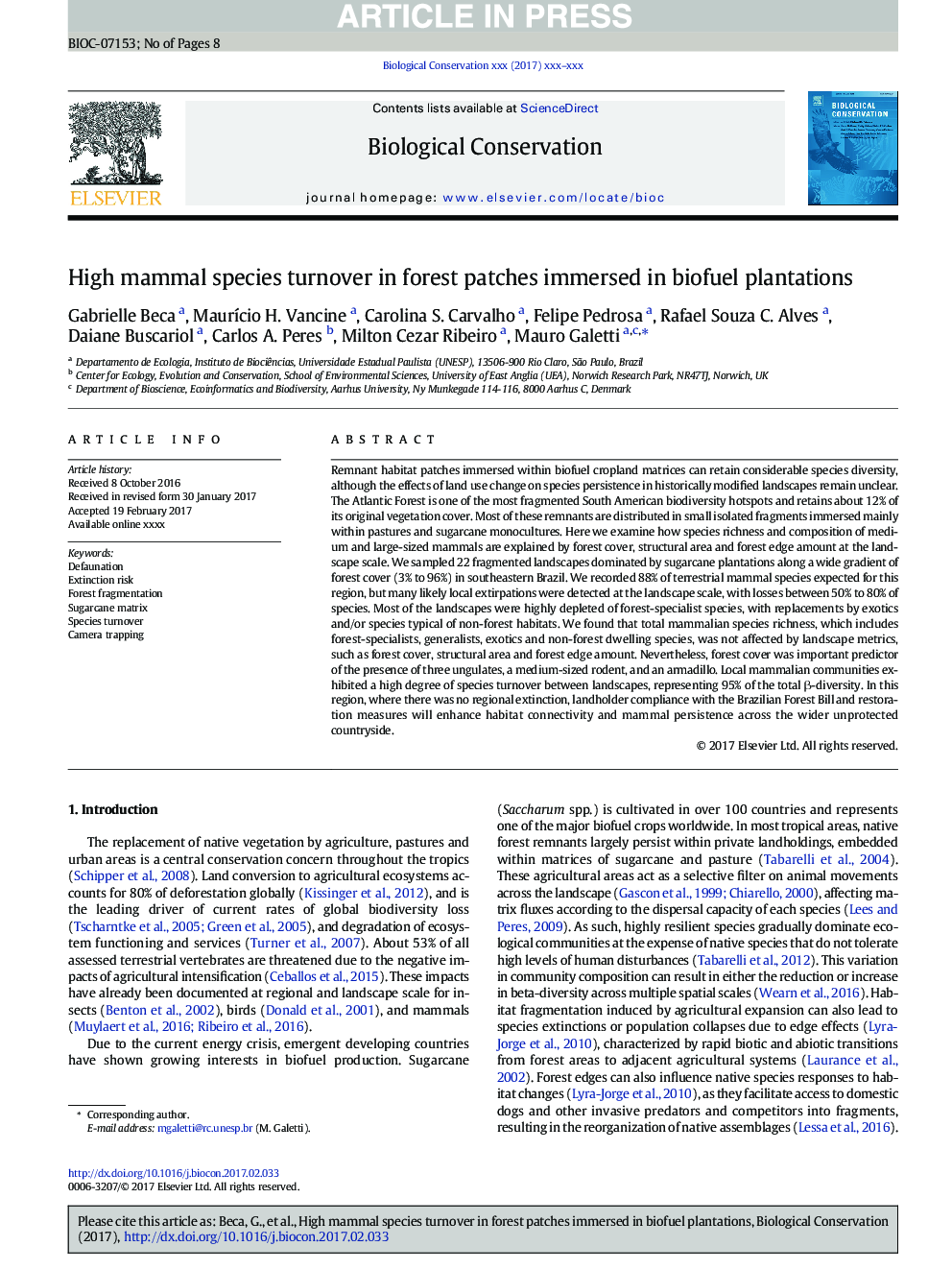| کد مقاله | کد نشریه | سال انتشار | مقاله انگلیسی | نسخه تمام متن |
|---|---|---|---|---|
| 5743232 | 1412300 | 2017 | 8 صفحه PDF | دانلود رایگان |
عنوان انگلیسی مقاله ISI
High mammal species turnover in forest patches immersed in biofuel plantations
ترجمه فارسی عنوان
گردش در گونه های پستانداران بالا در تکه های جنگل غوطه ور در کاشت های زیستی سوخت
دانلود مقاله + سفارش ترجمه
دانلود مقاله ISI انگلیسی
رایگان برای ایرانیان
کلمات کلیدی
پیش فرض خطر انقراض، تکه تکه شدن جنگل، ماتریکس شکردار جابجایی گونه ها، تله دوربین
موضوعات مرتبط
علوم زیستی و بیوفناوری
علوم کشاورزی و بیولوژیک
بوم شناسی، تکامل، رفتار و سامانه شناسی
چکیده انگلیسی
Remnant habitat patches immersed within biofuel cropland matrices can retain considerable species diversity, although the effects of land use change on species persistence in historically modified landscapes remain unclear. The Atlantic Forest is one of the most fragmented South American biodiversity hotspots and retains about 12% of its original vegetation cover. Most of these remnants are distributed in small isolated fragments immersed mainly within pastures and sugarcane monocultures. Here we examine how species richness and composition of medium and large-sized mammals are explained by forest cover, structural area and forest edge amount at the landscape scale. We sampled 22 fragmented landscapes dominated by sugarcane plantations along a wide gradient of forest cover (3% to 96%) in southeastern Brazil. We recorded 88% of terrestrial mammal species expected for this region, but many likely local extirpations were detected at the landscape scale, with losses between 50% to 80% of species. Most of the landscapes were highly depleted of forest-specialist species, with replacements by exotics and/or species typical of non-forest habitats. We found that total mammalian species richness, which includes forest-specialists, generalists, exotics and non-forest dwelling species, was not affected by landscape metrics, such as forest cover, structural area and forest edge amount. Nevertheless, forest cover was important predictor of the presence of three ungulates, a medium-sized rodent, and an armadillo. Local mammalian communities exhibited a high degree of species turnover between landscapes, representing 95% of the total β-diversity. In this region, where there was no regional extinction, landholder compliance with the Brazilian Forest Bill and restoration measures will enhance habitat connectivity and mammal persistence across the wider unprotected countryside.
ناشر
Database: Elsevier - ScienceDirect (ساینس دایرکت)
Journal: Biological Conservation - Volume 210, Part A, June 2017, Pages 352-359
Journal: Biological Conservation - Volume 210, Part A, June 2017, Pages 352-359
نویسندگان
Gabrielle Beca, MaurÃcio H. Vancine, Carolina S. Carvalho, Felipe Pedrosa, Rafael Souza C. Alves, Daiane Buscariol, Carlos A. Peres, Milton Cezar Ribeiro, Mauro Galetti,
